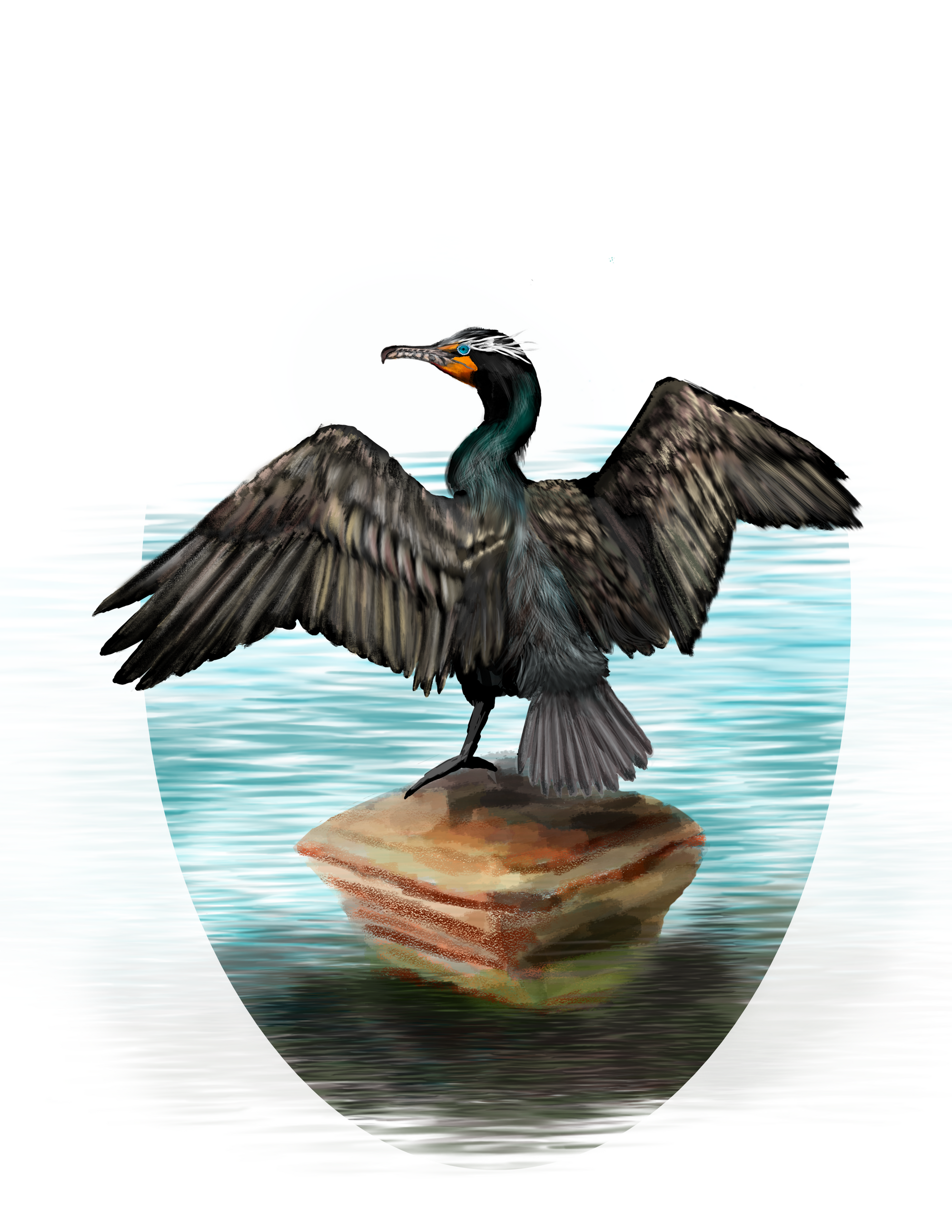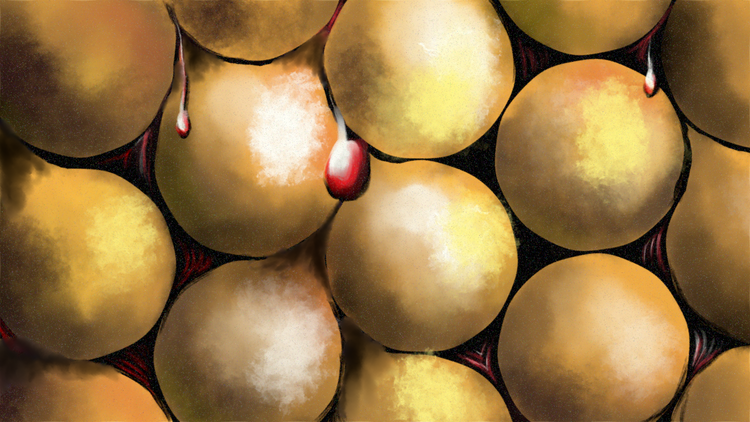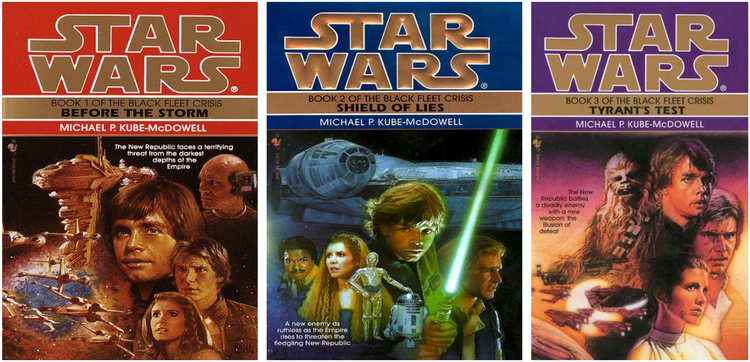
Running Commentary 8/16/2021
Hello,
I'm still in the middle of writing a bunch of different things at the moment: there's my think piece about Star Wars Canon, and a bulk review of the High Republic's second-wave-first-phase-whatever, and something I'm writing about BattleBots leading up to the new season that starts filming at the end of the month. That last one I'm thinking I'll see if Ordinary Times wants, since I can think of at least a couple people there who might like to read it. Either way I'll link to everything in the next RC after they're published.
Anyway...
Watching...
The Bad Batch
We've closed out Season 1 with the two-part finale, with our heroes returning to Kamino to face Crosshair. After some consideration, I do plan to give the season its own full review, but, in the meantime, here are my notes on these last couple of episodes. SPOILERS

- The season finished strong, with two episodes filled with action and good character moments.
- The destruction of Kamino echoes the destruction of Geonosis we've already seen to be happening at roughly the same time. The makers of both sides' armies each knew of Darth Sidious, which is probably the real reason they were destroyed.
- I appreciate that Crosshair is still Imperial without the chip. While the chip as a plot point has led to some good stories, it's still interesting to see some clones side with the Empire of their own will.
- There are always points at which Filoni's Star Wars projects forget that they're kids shows, and I think the extended scenes of the bombardment of Tipoca City is probably the first big one for this series.
Marvel's What If...?

This is, I believe, the first animated project within the MCU, and even so it's not the main MCU timeline. The first episode, positing that Peggy Carter had been made the supersoldier instead of Steve Rogers, laid out what the show intends to be. At first, I wasn't especially impressed, since Captain America and Captain Carter seemed to fight much the same way for the same cause against the same enemies. But the show didn't just make one change. In the Captain Carter timeline, the Allies capture the Tesseract away from Hydra, and use it to make a Iron-Man-like suit Rogers pilots. This gives me some hope that the series won't just be a series of glorified casting changes. The animation wasn't great, but I was able to get into it as I watched.
I might not cover this show week-to-week. I might just talk about it all at the end. It depends on how future episodes go.
Jeopardy
It's now time to give my final ranking of interim Jeopardy hosts. As always, new entries are in italics.
- Buzzy Cohen — The host of the Tournament of Champions actually did a really phenomenal job, balancing a real enthusiasm for the role with clear, consistent delivery and a sense that he knew what he was talking about. He isn't as big a name as Jennings, and isn't known from other projects like most other hosts, and was able to disappear into the role of host. I have no complaints about his performance.
- Joe Buck — When Buck was announced as the last guest host, fans immediately complained. I'm not a big sports fan, so I'm not familiar with sportscasters or who people like or don't. All I can comment on is his performance as host here. I thought he did quite well. He read clearly, he responded correct/incorrect quickly, he kept the show's energy going, and he seemed happy to be there. He brought just a little more personality to the role than the newscasters, so I'll rank him just higher.
- Anderson Cooper/Katie Couric/David Faber — I'm giving these two news presenters a tie spot. Unsurprisingly, they're good at both reading questions clearly and giving quick interviews after the first break. That's really all there is to hosting Jeopardy. I missed most of David Faber's episodes, but I'd rank him alongside the other newscasters who did fine based on the one I saw.
- Mayim Bialik — The first acting performer to host the show, Bialik is another guest host really pushing for the permanent slot. I think she would do well if picked. My only real complaint has nothing to do with her on the show, but rather the commercials she does for "mental sharpness" pills that ran during the breaks and kind of brought down the intellectual atmosphere.
- Ken Jennings — Jennings knows Jeopardy thoroughly. His performance was really only hurt by a thin voice and the fact that you know he could win against most anyone actually playing, which makes for a weird, lopsided dynamic. He has trouble disappearing into the role, but he'd be fine as a permanent host.
- Dr. Sanjay Gupta—The second celebrity physician to host, Gupta did well. He was certainly a better host than Dr. Oz. I don't think he's actually trying to get the permanent spot, though.
- Michael Richards — Serving as the host during two weeks when they couldn't get anyone else, Jeopardy producer Richards did a pretty good job of keeping things going from in front of the camera. He doesn't seem to want to be the host, but he could be*.
- Aaron Rodgers — Making the list by virtue of a decent performance on Celebrity Jeopardy, football player Aaron Rodgers started very poorly, but, as his two weeks went on, he loosened up a bit and he was actually doing pretty well once his time ran out.
- Robin Roberts—I saw a lot of complaints about Roberts. I thought she did okay, although I missed her first episode, so maybe she made a poor impression then? Unless I hear of something I missed, I'll put her here around the middle.
- George Stephanopoulos—The journalist and former political operative only hosted for a week, and I missed all but one of his episodes. He did well reading out questions and giving player interviews. I do think his past as communications director for President Clinton has left him a little less scandal-free than the host of Jeopardy would be, ideally.
- Bill Whitaker — The 60 Minutes correspondent was doing his best, but he was a touch too low-key. His first episodes were hurt by bad sound mixing, which rendered him much quieter than the contestants, but even once they fixed that, he was a bit slow to confirm answers and generally a bit too soothing. He wasn't terrible, but his episodes lacked much energy. Jeopardy shouldn't be super exciting, but it needs to be a little more exciting than it was those two weeks.
- LeVar Burton — The actor and former children's host was a grass-roots favorite I first saw floated as a possibility some time before Trebek's death. His time as the host of PBS Children's program Reading Rainbow made him an childhood hero to the bookish types who now make up the Jeopardy fanbase. I probably will not make any friends ranking him this low, but he just wasn't very good. Burton has a distinctive, very expressive voice that serves him well as an actor but which came off stilted as he read questions.
- Savannah Guthrie—Guthrie's performance was weirdly bad for someone with her background as a daytime news host. She seemed disinterested, reading questions with the tone of someone hosting Jeopardy while clearing out their email.
- Dr. Mehmet Oz — The surgeon/tv personality was apparently a friend of the late Alex Trebek, but he was also the worst guest host by some margin. A consistent, odd delay in confirming correct answers and a nervous enthusiasm seemingly put on for the show made his episodes awkward to watch. Ratings dropped perceptibly during his two weeks, so I don't think we'll be seeing him again.
*So, we now know that Michael Richards will be the new host, so I guess he did want to do it after all. Sony execs apparently preferred someone they already knew. Mayim Bialik was also picked to host "prime time and spinoff episodes". So, while my favorite wasn't picked, no one really bad was either. I'll kind of miss having a new host every week or every other week, but I won't miss having to remember to update this ranking.
Reading...

I've just gotten through Henry Petroski's The Pencil. Petroski, if you're not familiar, is a Professor Emeritus of Civil Engineering at Duke University. He is also the author of this and several other books about the history of design and invention. The Pencil was published in 1989, and it drew from earlier writings by Petroski for a couple of different journals mentioned on the copyright page (Across the Board and American Heritage of Invention & Technology). The book traces the history of the pencil from pre-pencil tools such as quills and small brushes, to the graphite-holder described by Konrad Gessner. to the '80s, which was then the modern day. Some elements of the book are a bit out-of-date; several pencils Petroski mentions as market-dominant in the book's time are no longer made. Of the standard yellow No.2 pencils he lists—the Eberhard Faber Mongol, the Eagle Mirado, the Venus Velvet—only the Dixon Ticonderoga still exists in manufacture (and in a quite diminished form, pencil enthusiasts are quick to tell you). Petroski correctly guesses that high-quality drafting pencils would be made obsolete by the computer and accompanying CAD software. He does not anticipate that regular writing pencils would also dive in popularity in the face of computerized notes and memos, leading to a dive in quality as pencil-makers race to the bottom of price. (This time of year, you can find pencils sold by the dozen for a penny in some "Back-to-School" sales. You should not buy these, but they can be found.)
Petroski gives the background of a lot of big names in pencils: Faber, Staedtler, Conté, Dixon, and a few less expected names: Henry David Thoreau, who, I learned reading this, was a pencil-maker by trade. He, along with his father, produced some of the best pencils made in America at the time. Hollywood actor Armie Hammer also, we find, has a familial tie to the world of pencils, as his great-grandfather Armand Hammer was involved in a daring (well, perhaps not as daring as some) caper to smuggle the secrets of pencil making out of Nuremberg, Germany to Lenin's USSR.
Aside from these anecdotes (some of which get mentioned in passing, then repeated, in greater depth, as new information, probably as an artifact of the book not being written in one piece) Petroski looks at the history of the pencil almost exclusively as the history of pencil design and engineering. While he brings a lot of good lessons out of this (new technology first develops before the engineering and mathematical models used to study and improve it; engineering new technologies cannot change the world without considering business, which is the other half of industry; trade secrets are good for business but bad for technological development; changes in supply of raw materials force changes in technology) a book titled simply The Pencil: A History might have included more than a passing mention of the history of pencil use: how the invention and increased availability and quality and variety of pencils changed literature, art, journalism, correspondence, etc. Petroski talks a little about learning handwriting, a little about drafting, and a little about carpentry and that's pretty much it, as far as what happens to pencils after they've been made. Also, strangely, while the history of the pencil sharpener is given its own chapter, the history of the eraser, an arguably more important pencil-adjacent technology, gets roughly one sentence, in which the obvious-in-hindsight origin of the term "rubber" is stated.
If you get a chance to read this book, I'd advise against reading it all in one go, as Petroski's writing, while informative, isn't especially gripping or smoothly composed. While I was hoping for something a bit more comprehensive from a history, what was there was good. 7/10

Bird of the Week
This week we return to the sea with the Double-Crested Cormorant, a widespread diving bird found in North America. Cormorants and shags (the two names applied to different species somewhat randomly) make up a family of birds within the same order as gannets, boobies, and frigatebirds. They are all pescavorous, flying out over water and diving after fish. Unlike many other sea-birds, these do not have any waterproofing oils in their feathers, and so, after diving, they must sit in the sun with their wings outstretched to dry. This habit, which was thought to make the birds resemble the crucified Christ, made cormorants a minor Christian symbol popular in medieval heraldry. Cormorants and shags can be found in all corners of the world's oceans, but the double-crested cormorant is the only one to also make a home in the Great Lakes region and along the Colorado and Mississippi rivers. I have personally seen these birds, usually at the lakeshore, though I did once see one well inland, diving into the same pond I referenced in my story of encountering a pied-billed grebe. The most I have seen at one time was a colony of 80 or so living in the Shiawassee National Wildlife Refuge, just south of Saginaw Bay.
Double-crested Cormorants are readily enough identified in the interior of North America, where they are unique as largely-black diving birds. Along the East, West, and Gulf Coasts, they can be differentiated from their cousins by their bright yellow-orange faces.
The term "cormorant" comes to English via French from the Latin term "corvus marinus", meaning "sea-raven". The double-crested's binomial is Nannopterum auritum. The genus name, meaning "small-winged" is a reference to the Flightless Cormorant of the Galapagos Islands, which does actually have quite small wings. The species name is Latin for "eared"; it and the bird's common name are a reference to the wispy, eyebrow-like feathers the bird sports during its breeding season.
Throughout the world, cormorants have been used in a sort of seagoing falconry, wherein trained cormorants are fitted with collars to prevent them from swallowing large fish, which are then retrieved by their handlers. This practice is no longer widespread, as it is inefficient compared to modern fishing techniques.
See the full archive of birds on Notion
Curation Links
How Cities Can Protect Migrating Butterflies | Allison C. Meier, Bloomberg
From an ecological standpoint, cities are actually pretty good. They are an efficient use of land and of water. But, optimized as they are for humans, they often provide a harsh habitat for other creatures. Here is an overview of several ways architects and city planners are trying to keep migrating monarch butterflies safe as the insects pass through town.
The Entire History of Maps, Civilization's Greatest Tool | Meg Neal, Popular Mechanics
A survey of maps, from a pre-Christ fragment depicting the world as known in Babylon all the way to Google Earth.
The Land of Living Snowflakes | Jake Buehler, Discover Magazine
A visit to the island of St. Matthew, a remote island off northern Alaska, which is the only roosting place of the little-studied McKay's bunting. No permanent structures exist on the island, and researchers' visits can be decades apart, so the little white birds remain shrouded in mystery.
The 'Pie Engineer' Who Designed a Dessert For the Jazz Age | Rossi Anastopoulo, Atlas Obscura
A profile of Monroe Boston Strause, the inventor of the Chiffon Pie, which brought pie from the home kitchen into the realm of fine dining. Strause accomplished this by attacking the problem of pie-making scientifically, in a way that foretold the modern molecular gastronomy movement. One key part of the pie that remains a feature of many today: the graham cracker crust.
See the full archive of curations on Notion







Member Commentary